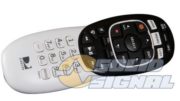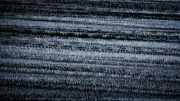It’s time to look once again at that eternal question: Should you use your smart TV as a DIRECTV client? I last addressed the question a little over 18 months ago and I concluded that it was still better to get a client box than use the built-in DIRECTV app on Sony, LG, and Samsung TVs. Is it time to change my opinion?
A little bit of background: I inadvertently bought one of the very first DIRECTV-Ready TVs back in 2011. I knew the functionality had been announced but Genies were very new back then (and in fact weren’t even called Genie yet.) I bought the TV because it seemed like a good combination of features and price. The DIRECTV software part came a little later.
That first client was, to be kind, not ready for prime time. It worked ok, but the user interface was blurry and slow, and some of the features didn’t work as well as the standalone boxes. It still required a wired connection so I put a client box there and never looked back.
A few years later… I was invited to play-test the first dual-core smart TVs with DIRECTV built in. The folks at DIRECTV knew of my struggles with the first-generation devices and wanted to show how much better they had gotten. They weren’t wrong. The user interface was identical to the standalone clients and the speed was much, much better. In fact if you want raw speed from a client you really need to be looking at the smart TVs and not the standalone clients, which aren’t any faster than they ever were.
So, should you use the smart TV instead of the client?
Believe it or not I still say no.
Here’s why: Even if your TV has Wi-Fi, it still won’t work wirelessly as a DIRECTV client. Period. That isn’t likely to change. You’re still going to have to run coaxial cable to the TV and then use an adapter to convert to Ethernet. That’s not likely to change either, at least not for a few years, and even then it’s likely that there will be some sort of pass/fail test to make sure it works. The adapter is smaller and cheaper than a client box but there’s not so much of a difference in the end.
Second, the “remote” experience on a smart TV isn’t as good. If you have a smart TV, you’re going to end up using two remotes. The DIRECTV remote has buttons the smart TV doesn’t, and the smart TV has buttons (like Smart Hub and Input) that the DIRECTV remote doesn’t. That’s right, on most smart TVs, the DIRECTV remote won’t change the input and there’s no way to get to Netflix or other services on the TV. It’s actually easier using a client box.
Finally, there’s still the issue of long-term upgradeability. My 2011 “smart” TV is still a great TV, but there’s nothing smart about it. Samsung’s given up on updates, so it’s stuck with a purely 2013 mentality and that means it’s nowhere near as good as modern streaming hardware. Of course you could start with the built-in DIRECTV client and then change over to a “real” client later, but that’s a hassle and you’ll need to get one of the professionals at Solid Signal involved to help you make the swap. I think it’s better to just do it right the first time.
So, even though DIRECTV’s HD client hasn’t really changed in five years (although it has a more modern model number and a new logo) it’s still the best choice. The software is continually kept up to date and the hardware is fast enough that it isn’t a problem. The DIRECTV-Ready TV’s a great idea, but it never quite works as well as it should.





